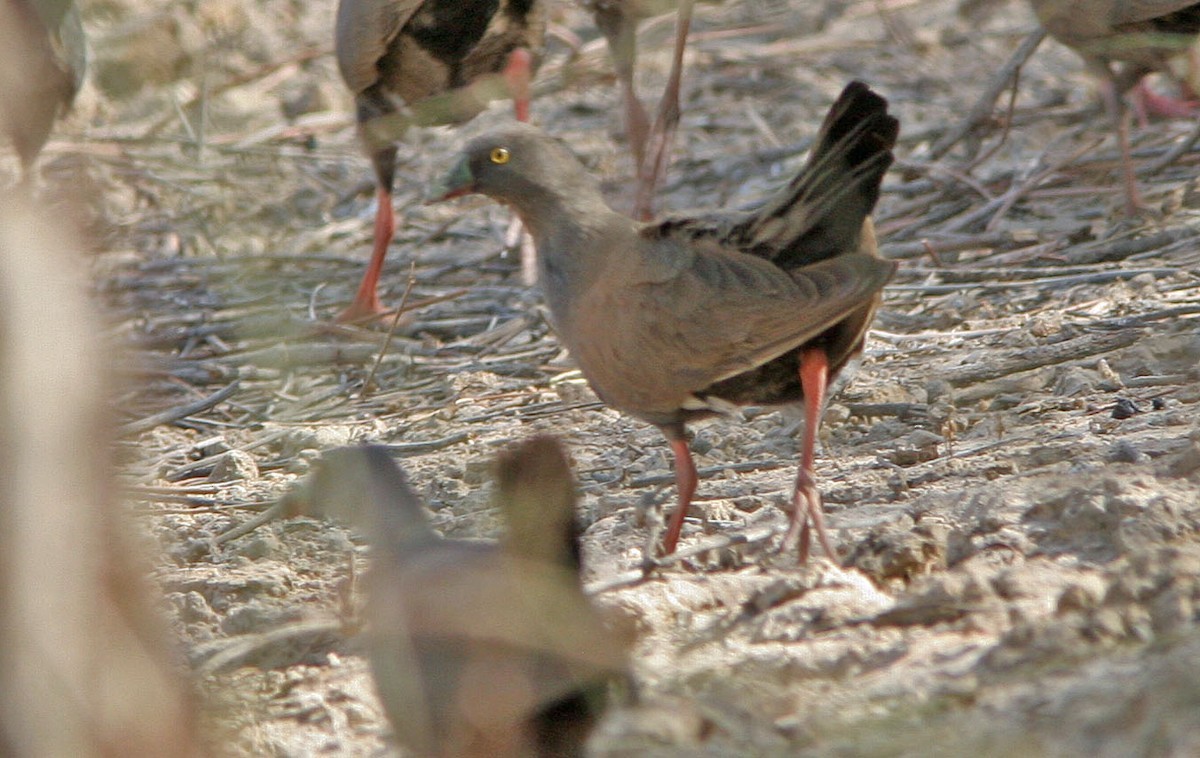Black-tailed Nativehen
A species of Moorhens Scientific name : Tribonyx ventralis Genus : Moorhens
Black-tailed Nativehen, A species of Moorhens
Botanical name: Tribonyx ventralis
Genus: Moorhens
Content
Description General Info
 Photo By Don Roberson
Photo By Don Roberson Description
The black-tailed nativehen is a large dark bird, reaching about 38 cm in length and weighing around 400g. This species possesses an erect tail and is endowed almost entirely with brownish-grey and green feathers. Its long legs and lower jaw are a striking pink-orange colour, as well as its eyes which are more of a bright orange colour. This species is not excessively vocal, its main call is an alarm 'kak' sound. They become noticeable when they are seen in small flocks on the ground. Their erect tails and social behaviour are reminiscent of domestic hens. 
Size
38 cm
Nest Placement
Ground
Feeding Habits
Black-tailed Nativehen forages for insects, seeds, and plant material, adapting well to farming areas where it may damage crops. This bird showcases a flexible feeding behavior that adjusts to the availability of various food sources.
Habitat
The black-tailed Nativehen's habitat predominantly includes diverse wetland environments in broader regions, favoring places like fresh and brackish shallow lakes, swamps, and floodplains, enriched with dense vegetation. They adapt to both natural and artificial aquatic settings, demonstrating versatility by occasionally residing in urban green spaces and are capable of occupying arid zones when required.
Dite type
Omnivorous
General Info
Feeding Habits
Bird food type
Distribution Area
The black-tailed nativehen is common throughout Australia, where it lives by permanent as well as intermittent water sources. It has a large range, with an estimated global extent of occurrence of 1,000,000–10,000,000 km². It is classified as least concern by IUCN. It is a rare vagrant to New Zealand, and occasional to Tasmania. 

 Photo By Don Roberson
Photo By Don Roberson